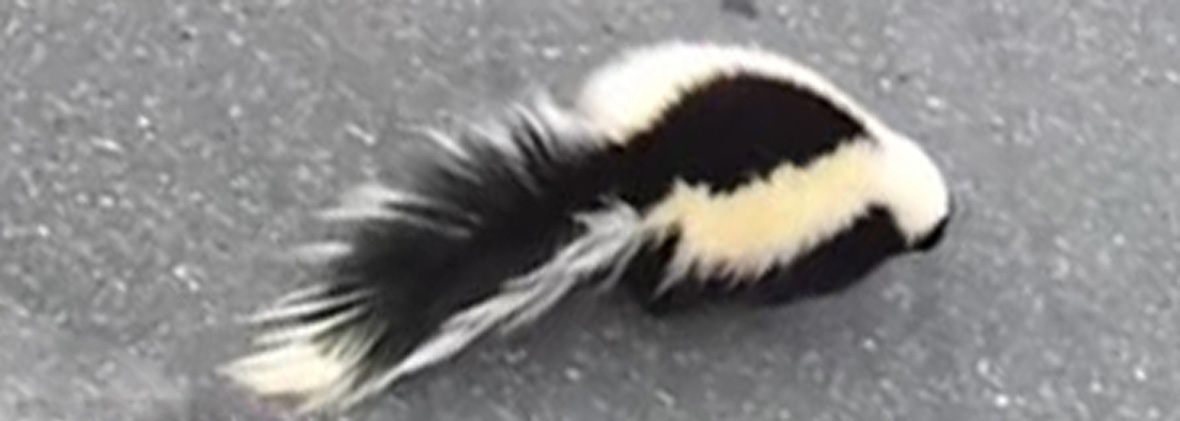What is a skunk's mating habits?
The skunk mating season starts in February to March. There are residents that notice that the same familiar smell is waiting for them throughout their entire neighborhood during this period.

When February starts, the males will start to look for the females so that they can breed. They may travel up to 10 kilometers during the mating period, but most of the time they travel only one or two kilometers. The stink takes place when the male wants to court females. If this takes place, the female skunk may generate an aroma that repels the rejected suitors. However, this smell will not last for a long period.
When the babies will be born will depend on when the mother was born and how hard the winter is. When there is a mild winter with less snow, then the males will be out early in February. A harsher winter can postpone how soon the males will go out, and they may wait until March. A yearling female skunk that was born in the previous year will not mate in February but will wait until March and April to mate.
The gestation period of the skunk may be 60 to 75 days. The baby skunk will be born in litters of about 15 kittens. Kittens that have been conceived at the start of the mating cycle will be born in May while the kittens born to the yearling mothers wait until June.
When the mating is finished, the male skunk will not be involved too much in the protection, rearing or feeding of the young skunk. When the skunks are born, they look pink with some faint white and black traces, but there is no fur. The babies are blind and they will not open the eyes until they are up to three weeks old. The kits will produce the musk at the age of three weeks old and they are able to spray an intruder.
Rearing the kitten is the responsibility of the female. In 2 to 3 months, the babies may be seen following the mother when she makes the nightly rounds looking for food. A mother skunk can rear her litter in the den. Even if the skunk is not an aggressive animal, it will be aggressive if it feels its babies are being threatened. The skunks will give signs to warn the threat by stamping the feet, raising the trail, charging forward and hissing. A skunk is able to breed during the spring that follows the birth. The life span of the skunk is 2 to 3.5 years. A skunk is a good digger and it likes to make a den in a hole found underground. The skunk can also live under a deck or shed. The skunk is a good mother and it moves with the babies to another den if it is being frightened. However, if it is evicted, it is possible that it may end up abandoning the babies.
You may also want to read:
Go back to the Skunk Removal home page or email us for more info about What is a skunk's mating habits?

